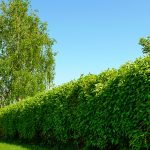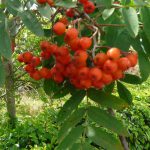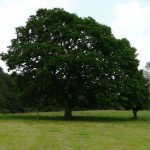
Blog / Trees for Winter Colour in the Garden
Related Posts
Trees for Winter Colour in the Garden
There are 5 months, November through to March, when deciduous plants are leafless and yet winter gardens can be stunningly beautiful and not just during those spectacular white frosts. For this reason it is important to plant for winter interest in the landscape or garden. And of course these just happen to be the best months for planting too!
I am often struck by the impressive range of winter colour on the Nursery. This range of colour comes from trees with distinctive ornamental bark such as coppiced Cornus with their striking stem colours and from pollarded or cut back willows. Evergreen shrubs and trees also play a key role giving form and structure in the garden during the long winter months.
This is not an exhaustive list, just a few of my favourites and why I think they’re quite striking and worth including in your planting. The size of your garden or landscape area in terms of the expected eventual height of trees and shrubs is an important consideration.
Prunus serrula or Tibetan Cherry has an outstanding ornamental bark with a rich shiny mahogany red colour and a peeling effect. It can look like a lacquered sheen.
Described as a small tree it will reach up to 12 meters in height.
Acer griseum or Paper Bark Maple is an excellent tree choice for the smaller garden as it is slow growing. As it matures it develops a lovely cinnamon amber coloured tissue thin peeling bark. An added bonus is its rich glowing scarlet autumn colour.
Betula utlis var. jacquemontii or Himalayan birch develops a striking snowy white stem as it matures. It’s a good tree to grow in a lawn as its light canopy of leaves allows underplanting. An added bonus is the yellow catkins that develop in the late winter. Eventual height ranges from 10-15 meters. This tree looks really well planted in small groups, if space allows.
Other birches such as Betula papyrifera and albo-sinsensis ‘fascination’ also have a lot to offer – they are light graceful trees with cream, pink or copper toned bark, and rich yellow autumn leaves.
Willow is a vigorous tree but when pollarded the young stems can be vibrant in winter sunshine. Salix alba ‘Britzensis’, Scarlet willow has brilliant orange young stems.
Acer palmatum ‘sangokaku’ has beautiful autumn colour and striking bright red bark through the winter. It is a small shrub tree and very suitable for the smaller garden.
Apart from trees, Cornus or Dogwoods give variety in winter colour with their purple, red, amber and fresh yellow/ greens stems. But they must be pruned hard every 2nd year down to 5-7cm in late February or March as the bright stem colours is in the fresh new growth. Cornus alba ‘Sibirica’ red stems.
Evergreens can be the lynchpin of the winter garden, giving colour, structure and form to carry us through those 5 months of inevitable brown.
Many of the evergreens used in hedging can also make a very attractive individual large shrub or small tree such as Laurus noblis Bay Laurel; Prunus lusitanica ‘Angustifolia’, Portugal Laurel; Photinia ‘Red Robin; Ilex aquifolium, Holly; Viburnum tinus Laurustinus and our native Arbutus unedo, Killarney strawberry tree.
Combining some of these suggestions will make your garden or landscape a pleasure to look out on over the winter.
Happy Planting!


